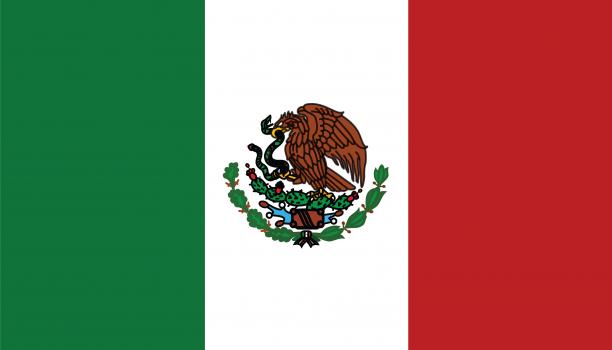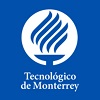
Estudia Animación 3D para Videojuegos en IMAGE CAMPUS, Tecnicatura Superior, Carrera de Grado, 100% ONLINE. Especializate como animador/a de personajes para videojuegos con Autodesk Maya y Unreal Engine. Aprende más.

| School | City |
|---|---|
| Tecnológico de Monterrey | Monterrey |
| Escena Escuela de Animación y Digital Arte | Mexico City |
| Universidad Panamericana | Mexico City and Guadalajara |
| Universidad Tecnológica de México | Multiple |
| Monterrey Center for Higher Learning of Design | Monterrey |
| Universidad del Valle de México | Mexico City |
Mexico's animation industry has evolved into a dynamic and influential sector, blending rich cultural narratives with technological advancements.
Historical Overview:
The roots of Mexican animation trace back to 1915 with Mi Sueño, the country's first animated film. Throughout the 20th century, the industry experienced periods of growth and dormancy, influenced by technological access and economic factors. Notably, in 1974, Los Tres Reyes Magos became Mexico's first animated feature film, marking a significant milestone in the nation's cinematic history.
Modern Developments:
The early 2000s marked a resurgence in Mexican animation, characterized by the emergence of dedicated studios and successful feature films. In 2003, Ánima Estudios released Magos y Gigantes, revitalizing interest in domestic animated productions. Subsequent successes include Huevocartoon's Una Película de Huevos (2006), which achieved notable box office success and led to sequels, solidifying the franchise's popularity.
Industry Structure and Studios:
Mexico's animation landscape comprises several prominent studios contributing to both domestic and international markets. Ánima Estudios, established in 2002, is recognized as Latin America's largest animation studio, producing a range of films and television series. Huevocartoon, founded in 2001, gained prominence with its egg-themed characters and has expanded into feature films and merchandise. Other notable studios include Animex Producciones and Metacube, each contributing uniquely to the industry's diversity.
Artistic Techniques and Innovations:
Mexican animators have demonstrated proficiency in various animation techniques, with a particular mastery in stop-motion animation. Studios like Cinema Fantasma and Rigo Mora have been instrumental in advancing this art form, creating works that resonate both locally and internationally.
Challenges and Opportunities:
Despite its growth, the Mexican animation industry faces challenges, including limited budgets and the need for more specialized educational programs. Marvick Núñez, an experienced animator, highlights the scarcity of universities dedicated to animation and gaming, emphasizing the necessity for comprehensive training across all animation departments.
Cultural Impact and Recognition:
Mexican animated films have garnered international acclaim, reflecting the industry's creative potential. Guillermo del Toro's 2022 stop-motion adaptation of Pinocchio, co-produced with Mexican studio Taller del Chucho, won the Academy Award for Best Animated Feature, showcasing Mexico's capacity to contribute significantly to global animation.
Overall, Mexico's animation industry continues to evolve, driven by a blend of traditional storytelling, artistic innovation, and a growing presence on the international stage.
What are Mexico's animation school options?
Mexico offers a variety of educational institutions for those interested in pursuing studies in animation. Here are some notable options:

1. Tecnológico de Monterrey (Monterrey): Tecnológico de Monterrey offers a Digital Arts Bachelor's program that includes internship opportunities, study abroad experiences, and sixteen disciplinary concentrations. Students can further specialize in areas such as Social Innovation; Design, Innovation, and Technological Entrepreneurship; Data Analytics and Artificial Intelligence Tools; and Conscious Business. Founded in 1943, Tecnológico de Monterrey is a private, non-profit institution serving around 90,000 students across 26 campuses.

2. Escena Escuela de Animación y Digital Arte (Mexico City): Established in 2010, Escena specializes in 2D and 3D animation, concept art, illustration, comics, and scriptwriting. The school offers both online and on-campus programs, including degrees in Digital Animation and Illustration & Concept Art. Escena also operates its own animation studio, Escena Animation Studio (EAS), where faculty and students collaborate on non-profit short films.

3. Universidad Panamericana (Mexico City and Guadalajara): Universidad Panamericana offers a Bachelor's Degree in Animation and Video Game Engineering, focusing on digital animation, computer simulation, and video game development. The curriculum emphasizes mathematics, digital art, technology, and programming, preparing students for careers in video game development, animated content creation, artificial intelligence, and visual effects development.

4. Universidad Tecnológica de México (UNITEC) (Mexico City, the State of Mexico, Guanajuato, Jalisco, and Querétaro): UNITEC offers a Bachelor's degree in Design, Animation, and Digital Art. The program integrates design principles with animation techniques, providing students with the skills necessary for various roles in the animation and digital art industries.

5. Monterrey Center for Higher Learning of Design (CEDIM) (Monterrey): CEDIM specializes in design, innovation, and business, offering undergraduate degrees in Animation, Fashion Design, Graphic Design, Product Design, Digital Arts, Marketing, and Architecture. The institution focuses on developing students' capacities through real-life projects with different industries, providing practical experience alongside academic learning.

6. Universidad del Valle de México (UVM) (Mexico City): UVM offers a Bachelor's degree in Animation and Digital Art, focusing on developing skills in digital animation, visual effects, and interactive media. The program prepares students for careers in film, television, video games, and advertising.
These institutions represent a selection of Mexico's animation education opportunities, each offering unique programs tailored to different aspects of the animation industry.
Other Schools to Consider: